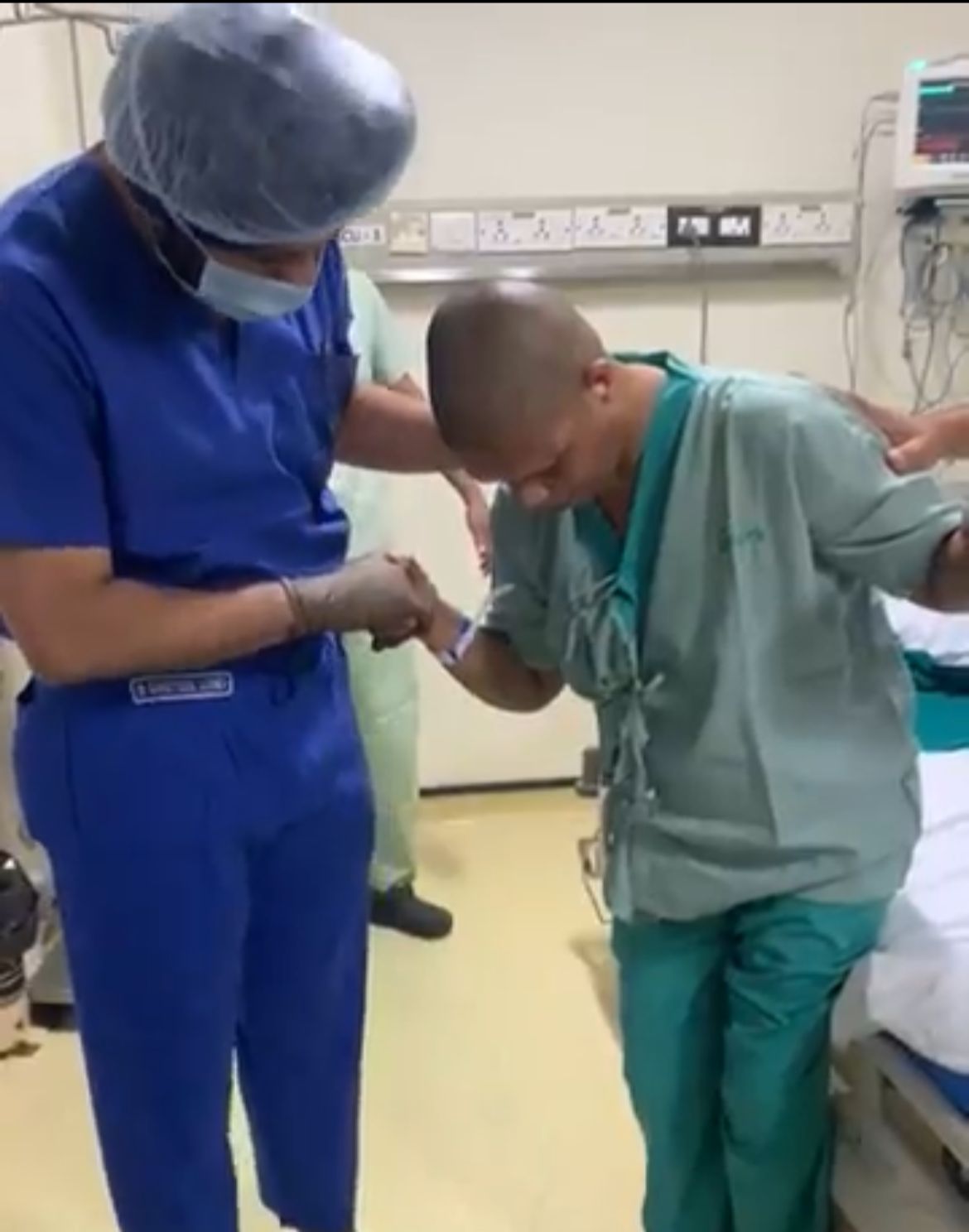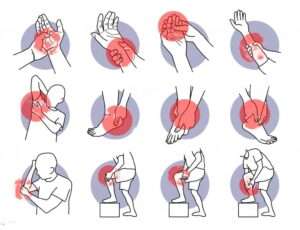Spasticity Treatment in Mumbai
Spasticity is a condition that affects the muscles and joints of the extremities. It primarily affects children of growing age. Flexor and extensor spasticity are the two primary forms of spasticity.
Spasticity occurs when muscles become abnormally tight due to repeated muscle contractions. It is a typical sign of neurological conditions like Cerebral Palsy (CP) and stroke.
Besides, it is caused by injury to the brain, spinal cord, or motor nerves. Spasticity can affect every muscle in the body, but it affects the legs the most. Individual symptoms can be excruciating, disturbing, and disabling.
If treated on time, spasticity patients can lead a normal life. There are several effective treatments available for spasticity. The treatment is based on the individual case, underlying cause, the patient’s age, and the severity of the spasticity.
Dr. Gurneet Singh Sawhney is dedicated to providing the most-effective spasticity treatment in Mumbai. Moreover, Dr. Sawhney is one of the experienced neurosurgeons in Mumbai.
In addition, he offers spasticity treatment in Mumbai that is reliable, modern, and results-oriented. Thus, patients consider him to be one of the top spasticity treatment specialist in Mumbai.
In this article, we will discuss more about spasticity, its causes, symptoms, diagnosis, and treatment.
Let’s know What are the Causes of Spasticity?
- An imbalance of signals from the central nervous system to the muscles (brain and spinal cord) is one of the major causes of spasticity.
- Individuals with spinal cord injury, cerebral palsy, traumatic brain injury, stroke, and multiple sclerosis are susceptible to this imbalance.
Symptoms of Spasticity
- Muscle tone reductionSymptoms of
- Spasticity
- Involuntary movements
- Quick and repeated muscle spasms
- Clonus, series of quick involuntary contractions
- Pain or uneasiness
- Reduced ability to function
- Concerns with hygiene and care
- Abnormal posture
- Contracture (permanent tightening of the muscle and tendon owing to severe long-term stiffness and spasms)
- Abnormalities of the bones and joints
Poor quality of life
Book An Appointment. Contact us now!
Treatment for Spasticity
According to Dr. Gurneet Sawhney, one of the top neurosurgeon in India, spasticity must be treated to increase comfort, movement, and independence. Spasticity, if left untreated, can result in pain, joint deformity, urinary tract infection, persistent constipation, and pressure ulcers.
Treatment aims include:
- Relaxing the muscles.
- Alleviating stiffness and pain.
- Improving your child’s ambulation and independence.
- Improving optimal long muscle growth in children.
Now, let’s discuss the various spasticity treatment options
- Physical and occupational therapy can help your child’s muscle flexibility, range of motion, coordination, and strength. Spasticity treatment may include temporary casts or braces, therapeutic heat, cold, electrical stimulation, and biofeedback. Therapy can assist your child in improving their capacity to do daily tasks to live as normally as possible.
- Medications can be used alone or in combination. Our neurosurgeon will design a treatment plan for your child to help relieve symptoms and minimize side effects.
- Baclofen pump surgery is one of the several effective treatments for spasticity. Baclofen pump procedure involves permanently implanting a pump that administers baclofen to the spinal fluid to treat moderate to severe spasticity that has failed to respond to oral medicines. Baclofen pump surgery can reduce spasticity caused by multiple sclerosis, spinal cord injuries, or other neurological illnesses.
- Work, school, activities, and caregiving may all be made easier with the correct spasticity treatment. The baclofen pump therapy can help reduce spasticity and dystonia at doses 100 times lower than baclofen pills by delivering baclofen directly to the spinal fluid. Dr. Gurneet Sawhney suggests surgical treatments for some spasticity patients.
- Rhizotomy is a surgical treatment in which the neurosurgeon isolates the nerves that provide contraction impulses to the afflicted muscles from the cable-like sensory nerves that run along the spine. To alleviate spasticity, the surgeon removes the most abnormal fibres while keeping other motor and sensory capabilities.
Schedule a consultation today and take the first step to a pain-free life!
Why Choose Dr. Gurneet for Spasticity Treatment in Mumbai?
Dr. Gurneet Sawhney delivers thorough and compassionate spasticity treatment in Mumbai. He works tirelessly to attain the finest results possible, thereby increasing the quality of life of his patients.
Moreover, Dr. Sawhney offers highly specialized and customized treatments having inexpensive spasticity treatment cost in Mumbai.
Also, Dr. Sawhney possesses a depth of expertise, skills, and commitment to providing the best possible patient care.

Besides, by combining innovative and result-oriented spasticity treatment in Mumbai, Dr. Sawhney provides holistic and integrated care to help patients overcome spasticity.
Frequently Asked Questions
What impact does spasticity have on daily life?
Physical symptoms like pain, contractures, and pressure sores are common in people with spasticity, impaired functional abilities, and difficulties with movement. But these symptoms can be alleviated with effective treatments. So, patients can lead a better life.
What activities can aggravate spasticity?
Maintain a steady temperature as much as possible. Your stiffness and spasms may temporarily worsen if you are too hot or cold. Once you are more at peace, the spasms and stiffness will subside. If you are worried or stressed about something, your symptoms may get worse.
How long can you have spasticity?
It usually takes 7 to 10 days for the results to become apparent. The effects can last anywhere from three to six months.
Can exercise help with spasticity?
Spasticity is characterized by inflexible muscles and stiffness caused by a breakdown in communication between the brain and muscles following a neurological injury. Exercise is an excellent treatment for spasticity. It stimulates neuroplasticity and aids in the restoration of brain-muscle communication.
Does spasticity worsen over time?
Spasticity in the elbow, hand, and ankle muscles is common, making mobility difficult. If the arm or leg isn’t moving much, spasticity can get worse over time. After a stroke, contractures can occur, causing stiffness in the arm or leg.
Blogs
Risk of Rebleed After Subdural Hematoma
Subdural hematoma is a potentially life-threatening condition where blood collects between the brain and its outer covering (the dura mater), often due to head trauma or injury. While timely treatment can resolve the immediate danger, a significant concern remains:...
Life Expectancy After Mini Stroke at 80
A mini-stroke, also known as a transient ischemic attack (TIA), may last only a few minutes, but its implications, especially for elderly individuals, can be long-lasting. At the age of 80, the body’s ability to bounce back from neurological events is often limited,...
Craniotomy Recovery Time: What to Expect Week by Week
A craniotomy is a type of surgical procedure that involves removing a portion of the skull to access the brain for medical purposes. It is often performed to treat brain tumors, relieve pressure from brain swelling, remove blood clots, or address other neurological...





